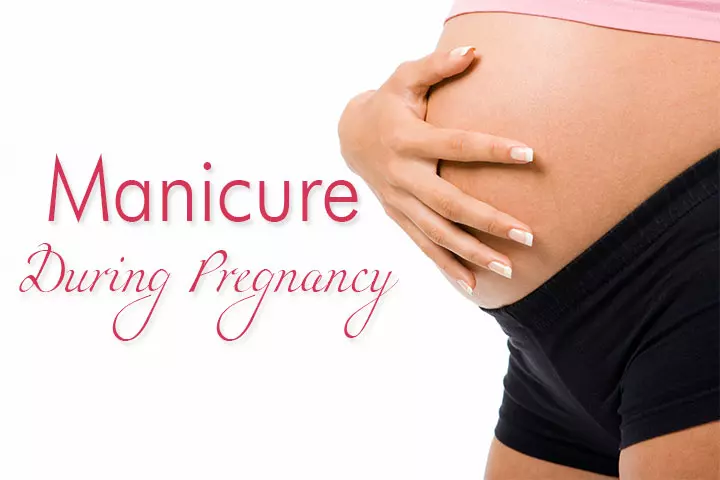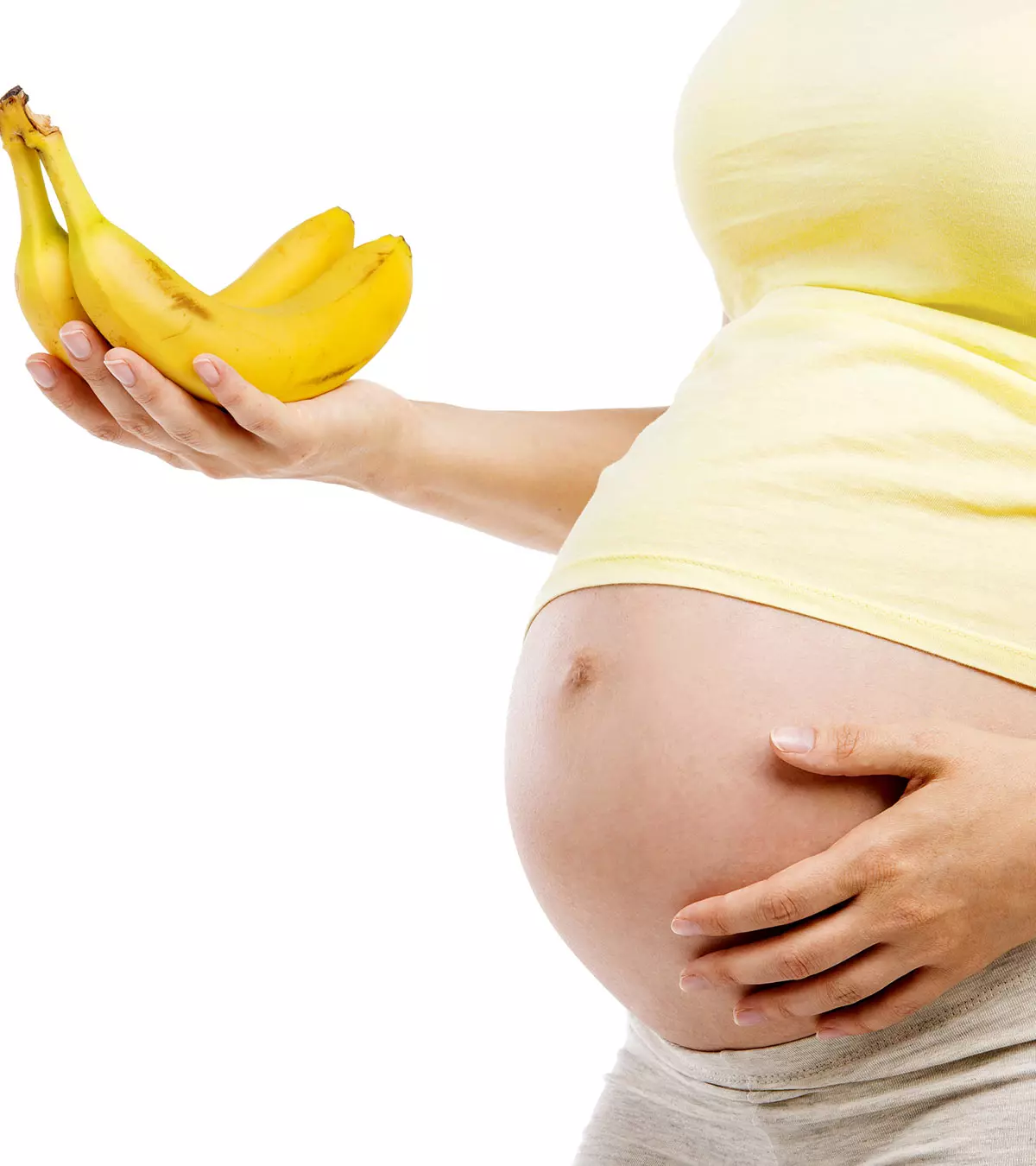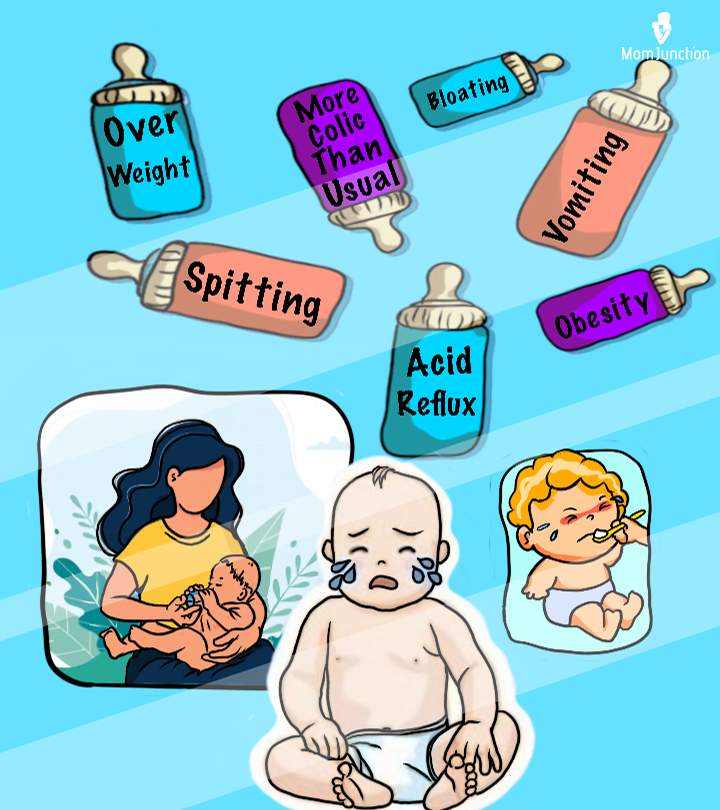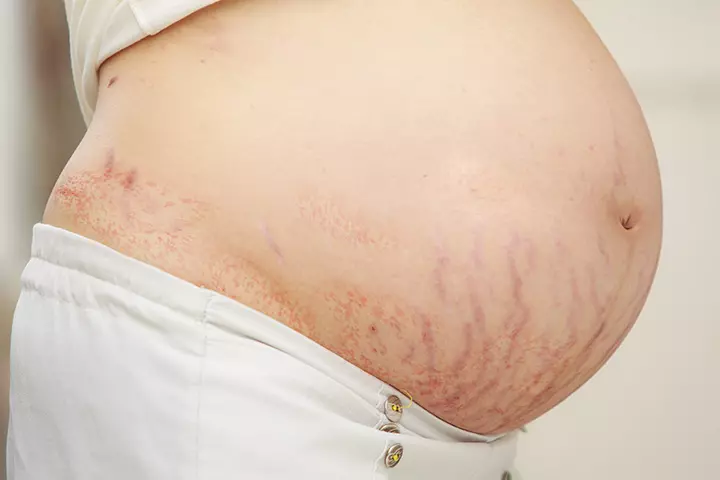
Image: ShutterStock
If your little one is teething, you may have thought of using teething tablets for babies at some point or the other. The teething process begins when the baby is six months old, and sometimes it may start as early as three months. By the age of two or two-and-a-half years, a toddler has a set of ten primary or milk teeth on each jaw, i.e., a total of 20 (1) (2).
Teeth eruption can be a mildly painful process, and sometimes there could be inflammation and redness of the gums. This may cause a few babies to feel miserable. As a parent, you would do anything to ease this pain (3).
The primary resort for most parents is teething tablets. In this post, we discuss their safety, ingredients, and alternatives.
Key Pointers
- Teething tablets contain various ingredients such as calcium and coffee derivatives and plant products.
- However, FDA suggests avoiding these tablets due to possible toxicity and side effects.
- Instead, you may try massaging techniques, teething toys, cold or frozen food items to soothe the teething pain.
What Are Teething Tablets?

Teething tablets or pellets are homeopathiciAn alternative treatment intervention where medications are usually obtained from natural sources formulations purported to provide relief from teething pain. Parents can place the dissolvable tablet under the baby’s tongue, where it dissolves and provides relief from teething-related discomfort and symptoms. You may also provide the tablet with a few sips of water to older babies.
Common Ingredients In Teething Tablets For Baby
Teething tablets for babies are made from a variety of ingredients, which are mostly plants or plant-derived compounds. A tablet could contain single or multiple ingredients. The following are some of the common ingredients of teething tablets (4).
- Calcium phosphate
- Calcium carbonate
- Chamomile plant
- Coffee extracts
- Modified iron phosphate
- Silica
- Sulfur
Are Teething Tablets Safe For Babies?

The U.S. Food & Drug Administration (FDA) warns against the use of homeopathic teething products, such as teething tablets, since they could contain plants or plant compounds that are toxic (5). Teething tablets may contain plants such as BelladonnaiA toxic plant used in certain medications known to be extremely poisonous and may cause severe reactions when ingested and AconiteiA toxic plant variety used in the preparation of certain medications, which, when ingested may cause adverse health effects that are highly toxic. Studies indicate that belladonna can alter the functions of the nervous and digestive systems along with other symptoms such as altered salivation, sweating, urination, heart rate, and blood pressure (13). Similarly, aconite has been linked with numbness, muscle weakness, hypotensioniA condition where the blood pressure is lower than normal , palpitations, nausea, vomiting, abdominal pain, and diarrhea (16). While these may be the reported symptoms and effects in adults, they may present themselves differently in babies. Thus, Director Janet Woodcock, M.D. from the FDA Center for Drug Evaluation and Research opines, “The body’s response to belladonna in children under two years of age is unpredictable and puts them at unnecessary risk. We recommend that parents and caregivers not give these homeopathic teething tablets to children and seek advice from their healthcare professional for safe alternatives (17).”
 Research finds
Research findsSigns Of Toxicity From Teething Tablet Usage In Babies
Teething tablets for babies could increase the risks of health problems, such as seizuresiSudden and abnormal surges of electrical activity in the brain characterized by jerking body movements and loss of consciousness , breathing problems, and agitation due to toxicity from belladonna (13). The following are the common toxicity-related signs in babies (12).
- Lethargy
- Drowsiness
- Excessive sleeping
- Difficulty breathing
- Skin flushing
- Muscle weakness
- Constipation
- Difficulty urinating
- Excessive fussiness
If you have already used teething tablets, stay alert to these signs. Seek prompt medical care if your baby displays these signs since early care could prevent any lasting effects of the toxins.
Safe Alternatives To Teething Tablets
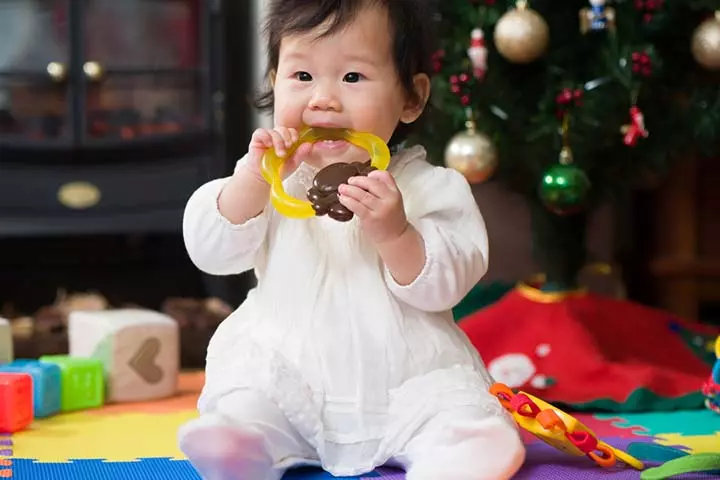
The FDA encourages parents to manage teething without the use of any prescription or over-the-counter medicines (6). The following are some of the safe ways to soothe teething discomfort in babies and toddlers (7).
- Cold wipes: You can use a cold and wet washcloth and wipe the baby’s gum with it. The coldness has an anesthetic effect and may also reduce the gums’ inflammation (8).
- Massaging with a finger: Gently massage the baby’s gums with a clean finger and without applying much pressure to subdue the oral irritation (9).
- Teething toys: Cool (not freeze) a teether in a refrigerator for some time and offer it to the baby. Gnawing on teething rings and toys can help reduce the irritation and provide teething relief. Use teethers made of solid rubber and avoid those filled with gel or silica since they may accidentally rupture on use (10). You may use mesh teethers to serve small quantities of fruits to older babies. Clean the teething toy before and after each use.
 Point to consider
Point to consider- Frozen food: Offer frozen popsicles as teething remedies to babies who consume solids. Cold or frozen food has anesthetic effects similar to cold wipes. Cold food items, such as cold purees and yogurt, also work great. You may offer cold finger foods, such as pieces of vegetables or fruits, to older babies and toddlers (11).
- Distraction: Parents can also try distracting the baby each time he/she grows cranky due to teething pain. Trying a fun game or book reading could distract a baby from teething. You can also take note of the time when your baby is most fussy due to teething and use that time for an activity or take the baby outdoors for strolling.
Mahima Satvik, a mother, shares how a simple form of physical touch can soothe a baby when they appear stressed and irritated from teething. She writes, “During teething phases, when my baby was irritable and stressed, gentle back rubs seemed to soothe him. It’s incredible how touch can be a panacea for many woes (i).”
Teething tablets for babies help them feel relieved from excessive pain and make them less agitated. However, you must know whether they require a tablet to ease the pain or not. Keep observing your baby to understand what they must be going through. Once you figure it out, it will become easier for you to help them by seeking the correct type of medical care for maximum relief. If you are still confused, you can talk to your doctor and clarify your doubts.
Frequently Asked Questions
1. How often can I give teething tablets to a baby?
You should not give teething tablets to babies. FDA recommends parents and caregivers avoid using homeopathic teething tablets and gels in infants and children due to their possible side effects (6).
2. Can parents still buy teething tablets?
Teething tablets are difficult to buy in recent times as some manufacturers have ceased producing them and also recalled the medication from the market (12).
3. Can teething tablets cause vomiting and diarrhea?
Teething tablets have not been reported to particularly cause vomiting or diarrhea. However, the belladonna contained in these tablets may slow down the stomach and intestine and result in the deterioration of certain gastrointestinal conditions (13).
4. Are teething tablets better than teething gels?
The Food and Drug Administration of the United States cautions consumers that tablets and gels for teething may harm infants and children (6). Therefore, do not use teething gel unless prescribed by a doctor.
5. Are there any natural alternatives to teething tablets?
If your child’s gums are puffy and sore, softly stroke or rub them with a clean finger. You can also offer your child a teething toy. These measures may help relieve teething pain for the little one (14).
Baby teething is a normal developmental phase that causes discomfort and gum pain in babies. It is usually harmless, and as your baby grows older, they are likely to become tolerant to any teething-related irritation. Parents can easily manage teething symptoms at home through simple interventions without the need for teething tablets. If teething affects the baby’s feeding and sleeping pattern, speak to a pediatrician for safe remedies.
Illustration: Teething Tablets Safe For Babies And Their Alternatives

Image: Dall·E/MomJunction Design Team
Infographic: Safer Alternatives To Teething Tablets For Babies
Teething can be a painful experience for babies and may also distress the parents. Teething tablets can help provide pain relief; however, it also has some side effects. Therefore, it is better to look for safer alternatives, as mentioned in the infographic below, for teething pain relief in babies.
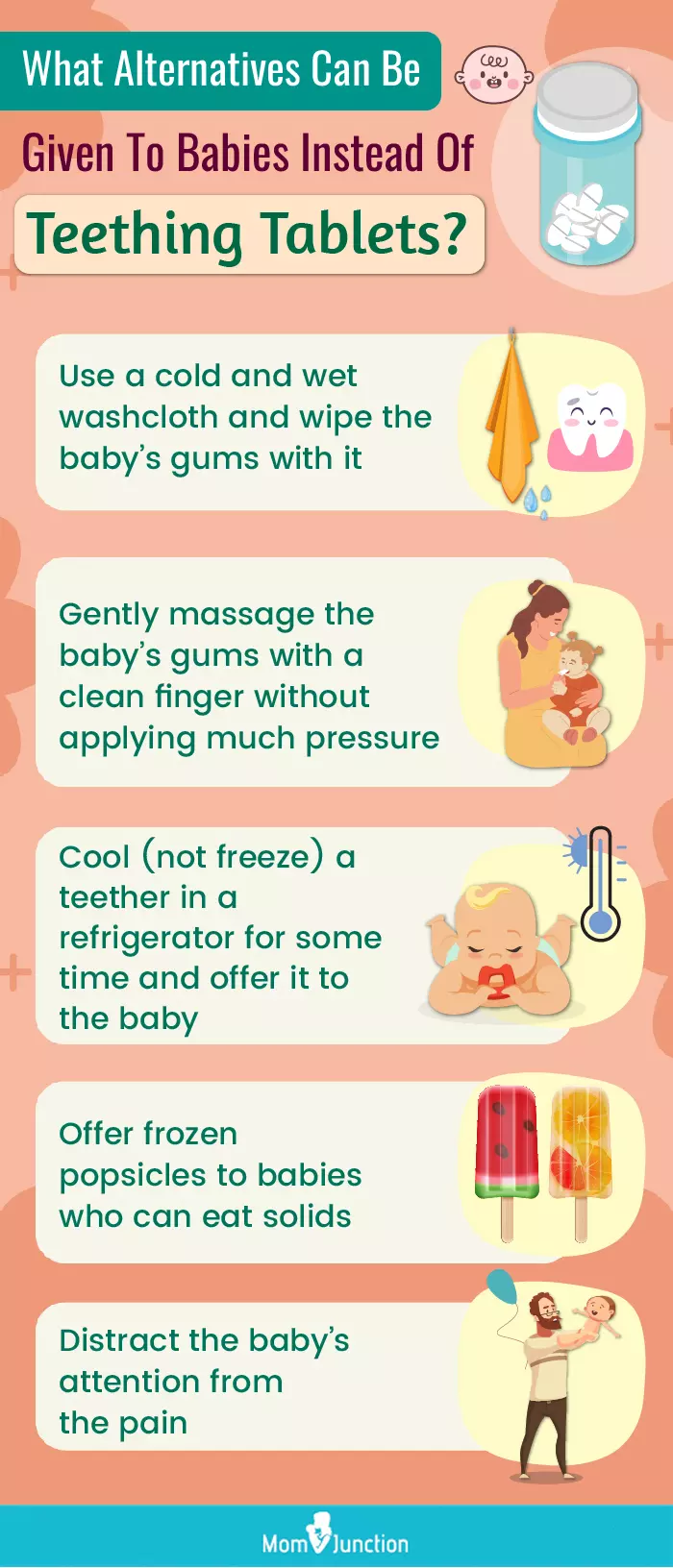
Illustration: Momjunction Design Team
Is your baby officially in the teething stage? Make informed decisions regarding teething remedies for your baby by exploring the pros and cons of teething tablets, oral gel, and Advil in this enlightening video.
Personal Experience: Source
MomJunction articles include first-hand experiences to provide you with better insights through real-life narratives. Here are the sources of personal accounts referenced in this article.
i. Significance of Hugs, Cuddles, & Caresses.https://medium.com/@mahima.satvik/significance-of-hugs-cuddles-caresses-5f23b9273f45
References
1. Teething tips: New information for parents; Texas Children’s Hospital
2. Eruption Charts; American Dental Association
3. Teeth development in children; Victoria State Government
4. Teething (Homeopathy); Kaiser Permanente
5. FDA warns consumers about homeopathic teething products; FDA
6. FDA warns against the use of homeopathic teething tablets and gels; FDA
7. Teething; American Dental Association
8. Teething 101; Cleveland Clinic
9. Dina DiMaggio, Baby’s First Tooth: 7 Facts Parents Should Know; American Academy of Pediatrics
10. Teething; Children’s Hospital of Philadelphia
11. Teething Products; University of Michigan
12. Teething Tablets: Answers to Frequently Asked Questions; Cincinnati Children’s Hospital Medical Center.
13. Belladona; MedlinePlus
14. Safely Soothing Teething Pain and Sensory Needs in Babies and Older Children; FDA
15. Baby’s Teeth Coming In? You Can Relieve Teething Pain Safely Without Medicine; University Hospitals Rainbow Babies & Children’s
16. Thomas Y K Chan; Aconite poisoning; National Library of Medicine
17. FDA confirms toxic substance in homeopathic teething products; American Academy of Pediatrics
Community Experiences
Join the conversation and become a part of our nurturing community! Share your stories, experiences, and insights to connect with fellow parents.
Read full bio of Dr. Tazeen Raees
Read full bio of Dr. Ritika Shah
Read full bio of Rohit Garoo
Read full bio of Shinta Liz Sunny







